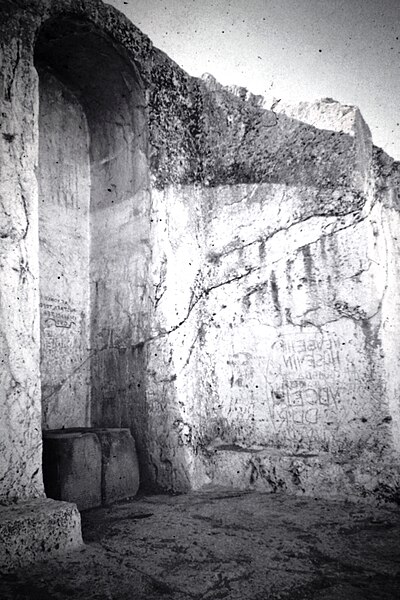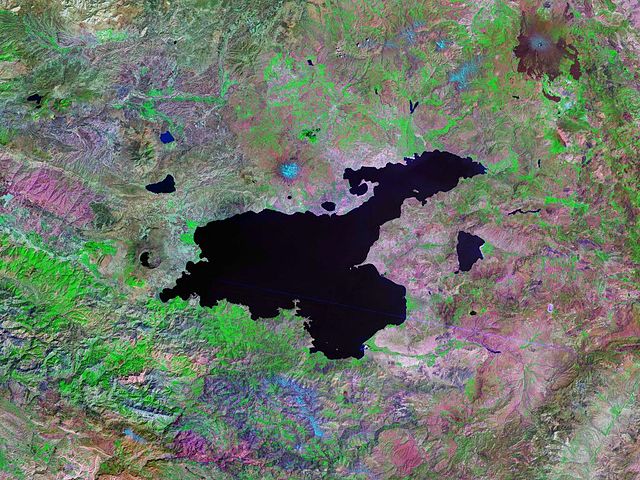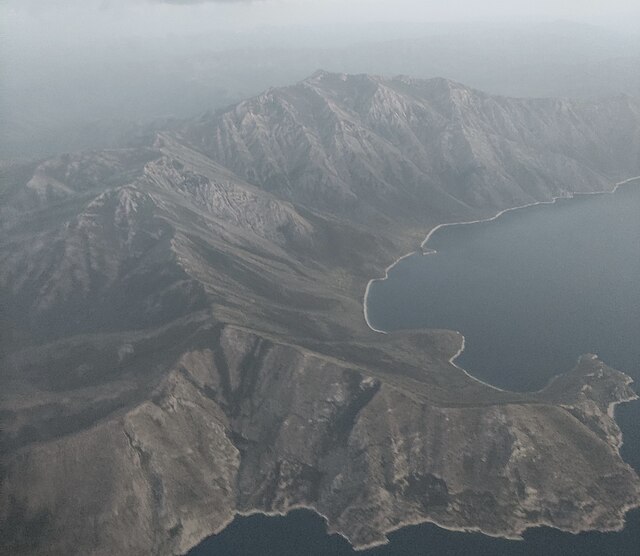Urartu was an Iron Age kingdom centered around Lake Van in the Armenian Highlands. It extended from the eastern bank of the upper Euphrates River to the western shores of Lake Urmia and from the mountains of northern Iraq to the Lesser Caucasus Mountains. Its kings left behind cuneiform inscriptions in the Urartian language, a member of the Hurro-Urartian language family. Since its re-discovery in the 19th century, Urartu, which is commonly believed to have been at least partially Armenian-speaking, has played a significant role in Armenian nationalism.
Fragment of a bronze helmet from Argishti I's era. The "tree of life", popular among the ancient societies, is depicted. The helmet was discovered during the excavations of the fortress Of Teyshebaini on Karmir-Blur (Red Hill).
Niche and base for a destroyed Urartian stele, Van citadel, 1973.
Urartian stone arch near Van, 1973. [citation needed]
Urartian tomb complex, Van citadel, 1973.
Lake Van is the largest lake in Turkey and Kurdistan. It lies in the far east of Turkey in the provinces of Van and Bitlis, in the Armenian highlands. It is a saline soda lake, receiving water from many small streams that descend from the surrounding mountains. It is one of the world's few endorheic lakes of size greater than 3,000 square kilometres (1,200 sq mi) and has 38% of the country's surface water. A volcanic eruption blocked its original outlet in prehistoric times. It is situated at 1,640 m (5,380 ft) above sea level. Despite the high altitude and winter averages below 0 °C (32 °F), high salinity usually prevents it from freezing; the shallow northern section can freeze, but rarely.
From space, 2000
Akdamar Island and the Holy Cross Cathedral, a 10th-century Armenian church and monastic complex. Mount Artos (Mt. Çadır) is seen in the background.
Lakes near Lake Van.
The view of Lake Van from the air.



![Urartian stone arch near Van, 1973. [citation needed]](https://upload.wikimedia.org/wikipedia/commons/thumb/a/a7/Urartian_arch_near_Van._1973.jpg/640px-Urartian_arch_near_Van._1973.jpg)



